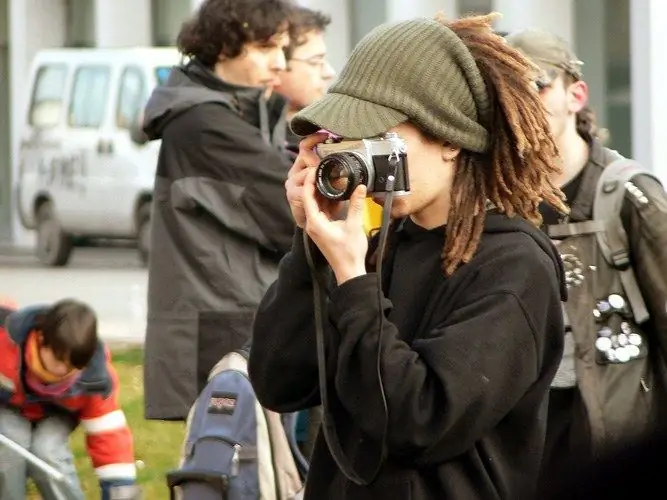A shot taken under conditions where the photographer did not have the opportunity to carefully compose the frame and light, often needs correction. The main tools for removing defects from photos in Photoshop are the Healing Brush Tool, Clone Stamp Tool and Patch Tool.

Necessary
- - Photoshop program;
- - Photo.
Instructions
Step 1
Open the picture in a graphics editor and duplicate the layer with the photo. To do this, select the Dublicate Layer option from the context menu by clicking on the layer with the uploaded photo. In this way, you will save the original image of the image in the edited document, with which you can compare the result of the correction in the process.
Step 2
Before you start correcting details, prepare your photo: adjust the color balance and remove noise. The color balance in the photo can be adjusted with the Curves filter from the Adjustments group of the Image menu. Select the rightmost eyedropper in the filter window and click on the area in the image that should be white. Select the eyedropper on the left and use it to indicate the black area in the photo. Use a medium eyedropper to click on the gray area of the image.
Step 3
To remove color noise, open the filter window with the Reduce Noise option from the Noise group of the Filter menu and adjust the noise reduction parameters. Do not set large values for Sharpen Details, after removing defects from the image, you will have the opportunity to correct the clarity of the picture using the Lab color mode.
Step 4
Extra parts accidentally included in the frame can be removed with the Clone Stamp Tool. To use the capabilities of this tool, hold down the alt="Image" key and click on a place on the image from which you can copy pixels of a suitable color and cover unnecessary details with them. After selecting the cloning source, click on the area you want to fix.
Step 5
Larger unwanted details can be removed from the frame with the Patch Tool. Use this tool to trace a fragment of the photo, with which you can cover unnecessary objects. Activate the Destination option in the panel under the main menu and drag the outlined patch to the desired location.
Step 6
If you shot a face close-up, minor skin imperfections can be removed from the photo using the Clone Stamp Tool or the Healing Brush Tool. Both tools work in a similar way, but using the Healing Brush adjusts the edge pixels of the overlay to match the surrounding colors.
Step 7
One of the most common problems that occurs when shooting a face from an unsuccessful angle is shadows and wrinkles under the eyes. To remove them, you can use the same Healing Brush Tool or the Median filter. Before working with Median, create a copy of the active layer.
Step 8
Turn on the quick mask mode with the Q key. Activate the Brush Tool, open the Brush Tip Shape tab of the brushes palette and select any round brush. Set the Hardness to about fifty percent.
Step 9
Paint over the shadows under the eyes with the adjusted brush and switch to normal mode using the same Q key. Use the Inverse option from the Select menu to invert the selection.
Step 10
Run the filter with the Median option from the Noise group of the Filter menu and adjust the Radius value to slightly blur the colors. Apply the filter and remove the selection using the Ctrl + D keys.
Step 11
Adjust the result of applying Median by increasing the opacity of the layer to which this filter was applied. This can be done by moving the Opacity slider in the layers palette to the right.
Step 12
If you are going to apply additional color correction to the photo, press Ctrl + Alt + Shift + E. In the layers palette, you will notice a new layer containing the visible elements of all layers in the document. Apply filters to this layer.
Step 13
Save the finished image with the Save As command from the File menu.






